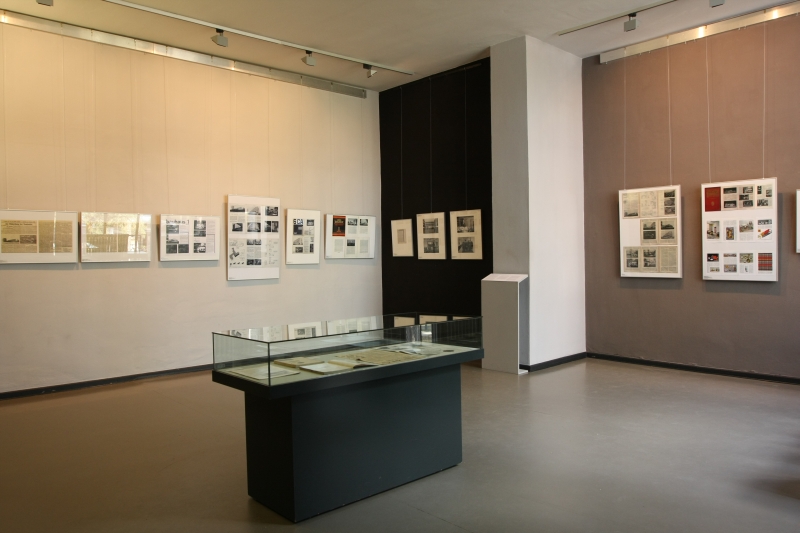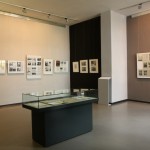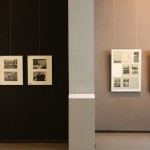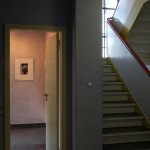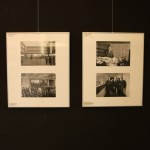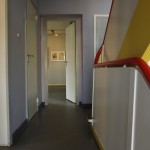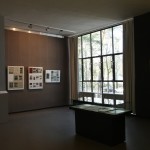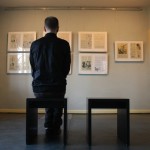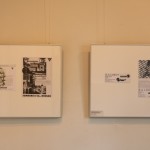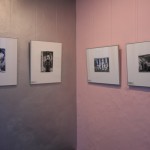bewundert, verspottet, gehasst – Das Bauhaus Dessau im Medienecho der 1920er Jahre
The much discussed experiment Bauhaus reaches its first conclusion with the opening of its own institute in Dessau on December 4th 1926. The impact, if any, which this group of architects, to which Gropius belongs, will have on our building culture is something we can leave to history to decide. This new style, a style which a large percentage of our population is not accustomed to, and to which the majority wont take, doesn’t offer any room for traditional architecture, but plenty of space for the artistic expression of the youthful students.1
So greeted the German construction magazine Die Bauwelt the opening of Bauhaus Dessau on December 4th 1926.
How other media reported on the event, how Bauhaus generally was presented in the media and how Bauhaus presented itself can be viewed in the exhibition “bewundert, verspottet, gehasst – Das Bauhaus Dessau im Medienecho der 1920er Jahre” currently showing in the Klee/Kandinsky Meisterhaus in Dessau.
Given the contrast between the sempiternity of a subject such as “Bauhaus and media” and the finite space available in the Dessau Meisterhäuser, one inevitably has to restrict what one presents and how; consequently, the organisers of bewundert, verspottet, gehasst – [admired, ridiculed, hated] – have, sensibly, decided to focus on two principle events: the opening of Bauhaus Dessau in 1926 and the “Metallische Fest” celebrated as part of carnival in 1929. In addition the exhibition takes a more general look at four further aspects: modernism as viewed in cartoons/caricature, Bauhaus Dessau as represented on and by radio and Bauhaus Dessau as represented in and through advertising. A final section provides a nice contrast to the coverage of the 1920s Bauhaus Dessau by looking at contemporary coverage of Bauhaus Dessau, a section that essentially focusses on the decision not to renew Stiftung Bauhaus Dessau Director Philipp Oswalt’s contract.
The opening of Bauhaus Dessau was formally spread over three days, starting with a press tour on December 3rd 1926 continuing with the official opening on Saturday December 4th and ending with a public open day on December 5th. In addition to over 1000 guests the opening attracted over 100 journalists from Germany and overseas. That may not sound like many, but….. We take part in press events 52 weeks a year. We rarely find ourselves in the company of 100 colleagues. And for 1926 it is a ridiculous number. Not only given the much smaller media landscape of the period but also, and looking back from our contemporary perspective, given the general belief that Bauhaus wasn’t that popular or culturally relevant at the time. Obviously it was.
The selection of articles presented in bewundert, verspottet, gehasst is not excessive, it can’t be given the limited space available in the Klee/Kandinsky Meisterhaus; however, it is more enough to provide a nice general overview of how the specialist and lay press of the day reacted to the event.
Generally very positive, being the briefest of brief summaries.
A particular joy is the colour photos in the March 1927 edition of “Velhagen und Klasings Monatshefte”. As we noted in our post from the Marianne Brandt exhibition at the Villa Esche in Chemnitz, too often our impression of the modernist era is represented through black and white photos. The obvious consequence being that we forget that the modernist era was colourful. Similarly many citizens of 1920s Germany/Europe would only have been aware of Bauhaus and their ilk through newspaper and magazine reports, and so one could imagine that they too were only presented with a monotone world. The fact that magazine readers in 1927 were also presented with colour images is therefore delightful too learn.
The second foci of bewundert, verspottet, gehasst is the Metallische Fest from 1929, essentially a large fancy dress ball. According to Harald Wetzel, Chairman of the Förderverein Meisterhäuser Dessau who are responsible for the exhibition, whereas Bauhaus parties in Weimar were largely about team building, the bringing together as it were of students and tutors, by Dessau they had taken on a much wider social significance and were essentially de rigueur for leading figures from local politics and society. Which again tends to destroy this myth of Bauhaus as an anarchic group of outsiders taking on the establishment and all its rotten traditions. Bauhaus Dessau was obviously very much part of the establishment. The principle focus of the Metallische Fest as presented in bewundert, verspottet, gehasst is six recently rediscovered photos from the ball taken by a Berlin photo agency. Quite aside from the photos themselves, the fact that a commercial agency photographer travelled from Berlin to Dessau to photograph a Bauhaus party makes clear just how important the event was. i.e. so important that a Berlin photo agency could make money from it.
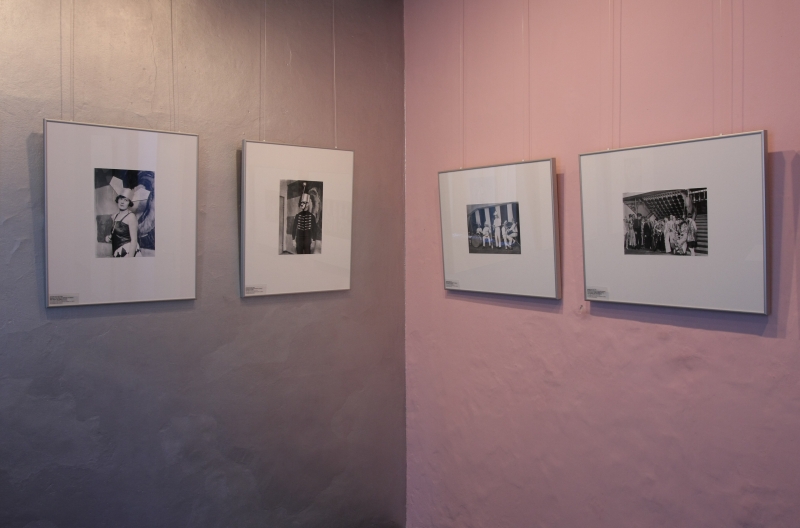
Photos from the 1929 Metallische Fest, as seen at bewundert, verspottet, gehasst - Das Bauhaus Dessau im Medienecho der 1920er Jahre
Away from the coverage of the Metallische Fest and the 1926 opening, bewundert, verspottet, gehasst provides numerous moments that allow for fresh, or at least rarely presented, impressions of the Bauhaus phenomenon. In, for example, the section looking at advertising, next to the examples of how local companies exploited Bauhaus in their advertising or how Bauhaus products were marketed, it is and was a joy to see adverts for Bauhaus. We were never aware that they did such. That Bauhaus actively advertised for students. In magazines. From these adverts it is especially interesting to learn that in 1929 Bauhaus Dessau employed Hanns Riedel as a Business Studies tutor. Quite aside from the fact that Business Studies sits, somewhat, contradictory to the general accepted Bauhaus myth of freedom and creativity above all, how may design schools today teach their students Business Studies? Not many. Or at least not many teach it to a level that it is actually useful and/or relevant for students. And certainly none advertise the fact that such is taught!
A particular highlight of the exhibition for us was the satire/caricature section, reminding of as it did of the book “How to live in a flat“. And as with W. Heath Robinson and K. R. G. Browne’s magnificent tome an underlying tone of German 1920s caricature of modernist design and architecture appears to have been the perceived exclusivity, pretentiousness and for all conceit of the modernist movement, this inexplicable distance between the aspirations and daily reality of the common masses and the world of the modernist. Something which of course brings us back to the opening quote and modernism being “a style which a large percentage of our population is not accustomed to, and to which the majority wont take”
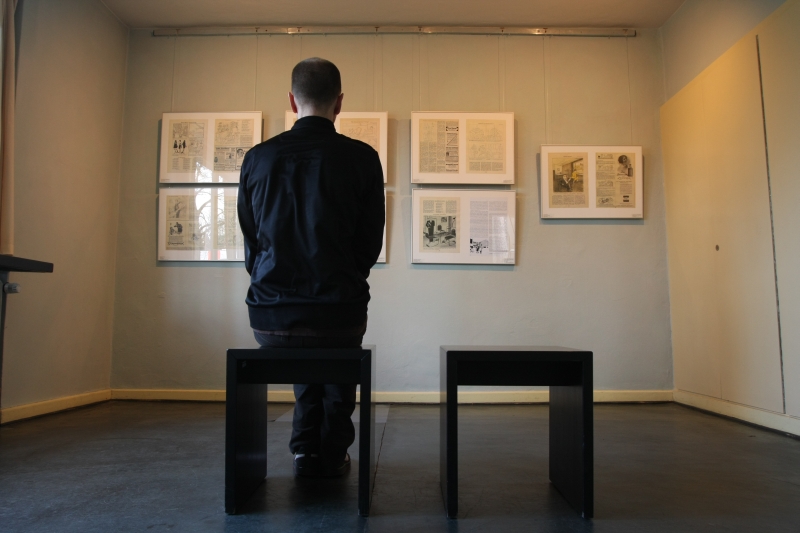
Enjoying caricatures of modernist design and architecture at bewundert, verspottet, gehasst - Das Bauhaus Dessau im Medienecho der 1920er Jahre
“It’s quite a small exhibition” the organisers advised us ahead of our arrival. Au contraire. It is a sizeable exhibition, and in our time we’ve travelled a lot further for a lot of smaller, less involved, less informative shows. Yes the exhibition is limited in scope and number of objects displayed, but as already noted, the only alternatives with such a topic are either reduced or everything.
And with the best will in the world the Dessau Meisterhäuser simply don’t have the resources to even attempt everything.
But if anyone is reading who does have the resources, “bewundert, verspottet, gehasst” provides a nice impression of what could be possible in a larger exhibition.
And for all with an interest in the subject areas covered “bewundert, verspottet, gehasst” is an excellent starting point for a deeper exploration of the representation of Bauhaus Dessau in the media and of Bauhaus’ relationship with the media in general
All of which makes it an exhibition well worth viewing.*
bewundert, verspottet, gehasst – Das Bauhaus Dessau im Medienecho der 1920er Jahre can be viewed at the Meisterhaus Klee/Kandinsky, Ebertallee 69/71, 06846 Dessau-Rosslau until Sunday May 18th 2014.
Full details can be found at www.gropius-haus.de
1.Die Bauwelt, 2nd December 1926
*Assuming that is your German is up to the task ….. It is a monolingual exhibition, and by the nature of the material presented, a text heavy monolingual exhibition.
- bewundert, verspottet, gehasst – Das Bauhaus Dessau im Medienecho der 1920er Jahre
- bewundert, verspottet, gehasst – Das Bauhaus Dessau im Medienecho der 1920er Jahre
- bewundert, verspottet, gehasst – Das Bauhaus Dessau im Medienecho der 1920er Jahre
- Pressefoto der Eröffnung des Bauhauses Dessau im Dezember 1926, gesehen bei bewundert verspottet gehasst Das Bauhaus Dessau im Medienecho der 1920er Jahre
- bewundert, verspottet, gehasst – Das Bauhaus Dessau im Medienecho der 1920er Jahre
- bewundert, verspottet, gehasst – Das Bauhaus Dessau im Medienecho der 1920er Jahre
- Betrachtung der Karikaturen von modernem Design und moderner Architektur in “bewundert, verspottet, gehasst – Das Bauhaus Dessau im Medienecho der 1920er Jahre”
- Bauhaus Werbung, gesehen bei bewundert verspottet gehasst Das Bauhaus Dessau im Medienecho der 1920er Jahre
- Fotografien des Metallische Fests 1929, gesehen bei bewundert, verspottet, gehasst – Das Bauhaus Dessau im Medienecho der 1920er Jahre
Tagged with: Bauhaus, bewundert, Dessau, gehasst - Das Bauhaus Dessau im Medienecho der 1920er Jahre, verspottet
